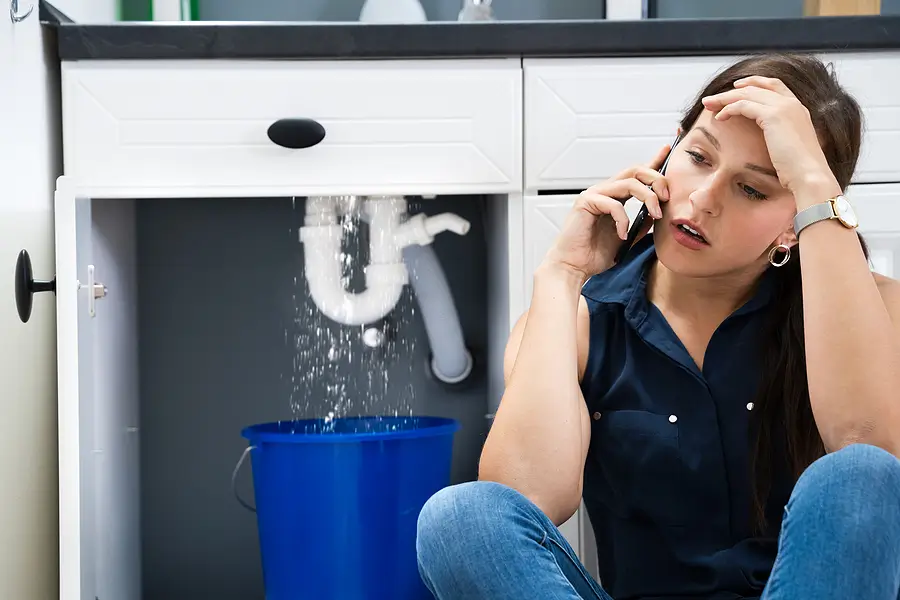Imagine it’s late at night, and your tenant calls in a panic—a pipe has burst, and water is gushing everywhere. Suddenly, your quiet evening transforms into a race against the clock to save your property and tenant.
These are the moments that test your preparedness as a landlord. Knowing how to handle emergency maintenance needs for your rental property can minimize damage and keep your business thriving.
Emergency maintenance isn’t just about responding to problems; it’s about building trust, fostering reliable landlord-tenant relationships, and safeguarding your investment.
Acting quickly in these critical situations shows your tenants they can count on you, ultimately benefiting your reputation and bottom line.
Understanding Emergency Maintenance
Emergency maintenance encompasses repairs that cannot wait because they could harm, disrupt safety, or cause significant property damage. These issues require emergency services to ensure the safety and comfort of everyone involved.
Examples include emergencies like broken water lines, gas leaks, or electrical hazards. If left unattended, these can compromise safety, cause structural damage, or increase repair costs.
As a rental property owner, you must stay informed and ready to act. Having a plan for such situations sets the foundation for successful property management.
Recognizing Maintenance Emergencies
It is key to distinguish emergency maintenance concerns from routine maintenance issues. Understanding the difference allows you to prioritize outcomes efficiently and helps tenants know whether to report a problem immediately or wait until regular business hours.
Here are some examples of maintenance issues typically considered emergencies:
Gas leaks with the risk of an explosion or carbon monoxide poisoning.
Severe electrical failures, such as exposed wires or power outages, impact essential functions.
Broken heaters or air conditioning systems during extreme temperatures that threaten tenant health.
By contrast, delayed repairs for minor appliance issues or routine wear-and-tear fall into non-emergency maintenance requests. Setting expectations and communicating these differences to tenants prevents unnecessary after-hours calls.
Common Types of Emergency Maintenance
Certain types of emergencies require swift and expert resolutions to protect both tenants and your property. The most common include:
Heating and Cooling Problems: A malfunctioning HVAC system during extreme winter cold or sweltering summer heat can quickly develop into a crisis. Tenants rely on functional systems to ensure their well-being.
Carbon Monoxide Threats: Faulty appliances or heating systems can leak this odorless, toxic gas, posing a life-threatening hazard that must be addressed immediately.
Power Outages and Electrical Issues: Widespread power cuts or exposed circuits increase inconvenience and safety risks.
A responsive maintenance team to address such emergencies ensures smoother resolutions and tenant satisfaction.
Health and Safety Hazards
Emergencies that jeopardize tenant safety should always be treated with the highest urgency. Issues such as gas leaks, fires, or compromised structural integrity (e.g., a sagging roof) require rapid escalation.
As a landlord, you also have legal obligations to provide a safe, habitable property. Neglecting these issues could lead to liability claims or non-compliance with local rental laws.
The key to avoiding legal or financial headaches is providing timely solutions that protect your tenants and demonstrate your commitment to their well-being.
Property Damage Risks
Time is critical in emergency situations—not acting fast risks severe property damage.
For instance, broken water lines can flood a unit or even an entire building within hours. The longer you delay action, the more expensive the repair could become.
By prioritizing rental property emergency maintenance, you prevent problems from escalating into costly disasters. Swift responses also help you avoid excessive repair costs and maintain the long-term structural integrity of your investment property.
Emergency Protocols in Property Management
Operating without an emergency maintenance protocol leaves you vulnerable during crises. Well-thought-out protocols streamline responses and reduce confusion.
Include these key elements in your plans:
Designated Contacts: Provide tenants with direct numbers for your maintenance personnel, property manager, and trusted vendors.
Clear Guidelines: Define what is considered a maintenance emergency so tenants understand the urgency level.
Response Timeframes: Clearly communicate how and when you’ll handle emergency calls.
Preparedness reduces downtime and avoids unnecessary complications during terrifying moments.
After-Hours Emergencies Vs. Regular Business Hours Requests
When it comes to non-emergency maintenance, timing makes all the difference. Issues like minor leaks or malfunctioning appliances can wait until the next workday.
However, anything involving immediate risk—like a suspected gas leak or exposed wiring—cannot.
Differentiating between emergencies and routine requests ensures attention is directed to issues of the most significant concern while scheduling regular needs during normal business hours.
How Property Managers Handle After-Hours Issues
Sometimes, the scale of an issue makes partner expertise vital. Property managers excel at handling unexpected crises smoothly. They are trained to manage after-hours calls, provide quick solutions, and keep tenants informed every step of the way.
Most importantly, property managers maintain strong communication lines, ensuring you’re covered while reinforcing confidence for your tenants.
Building a Reliable Maintenance Team
Even with plans in place, disasters don’t wait. That’s why you need an experienced team of maintenance personnel or vendors who can respond when a pipe bursts or a broken lock compromises security.
Their expertise will ensure problems are solved efficiently, protecting your finances and tenant’s peace of mind.
Preventive Maintenance Actions
The best solution to emergencies is to prevent them altogether. Regular inspections and proactive fixes protect against significant breakdowns.
Top Preventive Tips for Property Owners:
Replace HVAC air filters every three months to ensure efficient heating and cooling.
Inspect plumbing for wear and fix small leaks before they escalate into floods.
Check smoke and carbon monoxide detectors regularly.
Secure the property by addressing minor repairs like locks or window issues.
Preventive measures go a long way toward minimizing risks and fostering smoother management.
Be a Pro in Managing Emergency Maintenance
Handling emergency maintenance requires thoughtfulness, preparation, and swift action.
By knowing what’s urgent versus what can wait, partnering with skilled vendors or a property management company, and maintaining open lines of communication with your tenants, you protect your property and reputation.
Emergencies will inevitably happen, but a solid maintenance plan ensures your investment thrives even under the most challenging circumstances.
At PropM Inc., we help property owners stay ready and resilient. Contact us today for expert guidance on setting up an emergency maintenance protocol!
Other Resources:
Maintenance Coordination: Who Pays for Rental Maintenance in Portland, OR?
Legal and Optional Tenant Maintenance Responsibilities in Portland, OR


